Digital and analog cameras offer vastly different experiences. While digital is associated with automation and speed, analog is considered by many to offer a more engaging and thoughtful experience. They both have their pros and cons, but what if there was a camera that provided a hybrid shooting experience that merged the best of both worlds? After falling in love with the analog experience in 2020, I’ve been yearning for something like this. Luckily, I had the opportunity to shoot the latest addition to the X100 series—the Fujifilm X100V.
Fujifilm has long been known for creating unique cameras that fill niche spaces in the photography market (think of their medium format rangefinders, the unmatched-in-its-wideness G617, and even Fuji’s Instax cameras), and the X100V is no exception. Combining the intentionality of analog photography with the accuracy and speed of digital, the X100V is an extraordinary digital camera with analog heart.
What is the Fujifilm X100V
The Fujifilm X100 series is a line of compact, prime lens cameras first introduced in 2011 with the Fujifilm FinePix X100. The X100 was a game-changer for the photography industry. At the time of its release, nothing like it existed on the market. It was the first Fujifilm compact camera to pack an APS-C sensor, a fast 23mm lens (35mm full-frame equivalent), and a renowned hybrid viewfinder system into a sophisticated, retro-styled body with traditional analog exposure controls. With the X100, Fujifilm successfully blurred the lines between digital and analog and proved that a unique shooting experience was just as valuable to photographers as improved technical specs.
The X100 also helped push the mirrorless movement forward, demonstrating that it was possible to fit substantial sensors in compact cameras. As the first of its kind, it had its share of flaws. Yet the camera was considered innovative and was received extremely well by enthusiasts and professionals alike, creating a fandom that follows the series today.
Since the first X100, Fujifilm has updated the series four times in the X100S, T, F, and now, the V. Released in February of 2020, the X100V is an impressive iteration on the already highly-praised X100 line-up. While the X100V retains the retro styling and dense feature-set of its predecessors, Fuji has made some notable upgrades, including a 26 MP X-Trans APS-C sensor, a redesigned lens, weather sealing, an updated viewfinder, a navigational joystick, and a tilting touchscreen LCD display. All of these features make the X100V a great tool for several different photography styles, particularly street, travel, and documentary photography. Considering Fuji built this camera to mimic the intentionality of manual film cameras, it’s not really an ideal match for beginners, but rather geared towards enthusiasts and professional photographers.
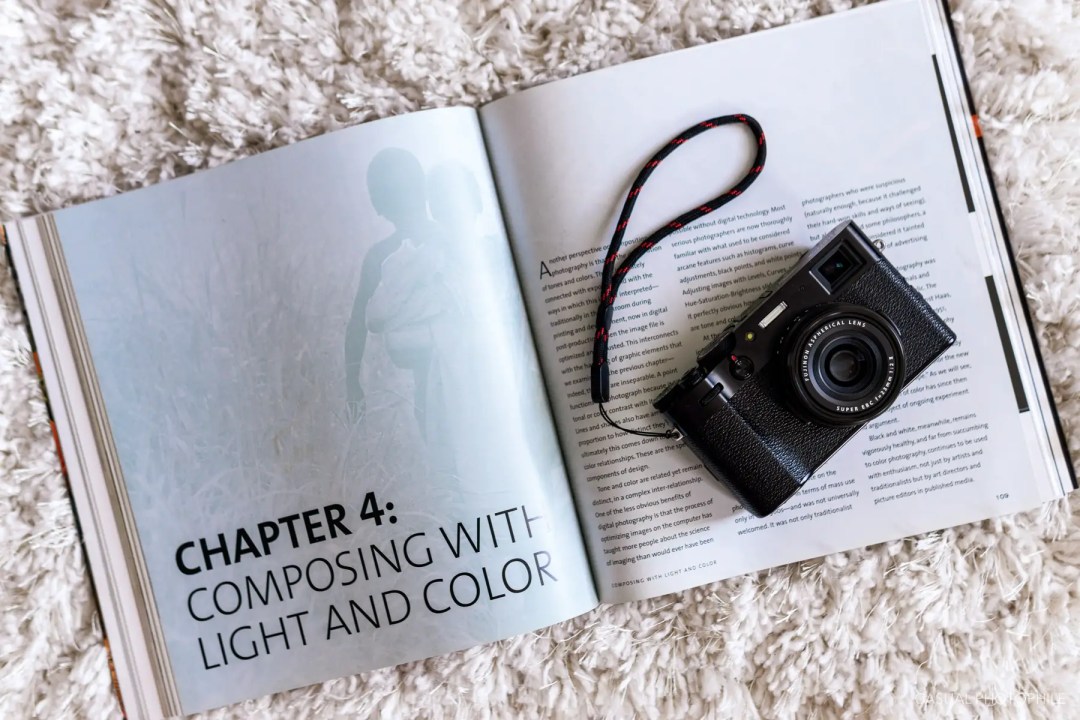
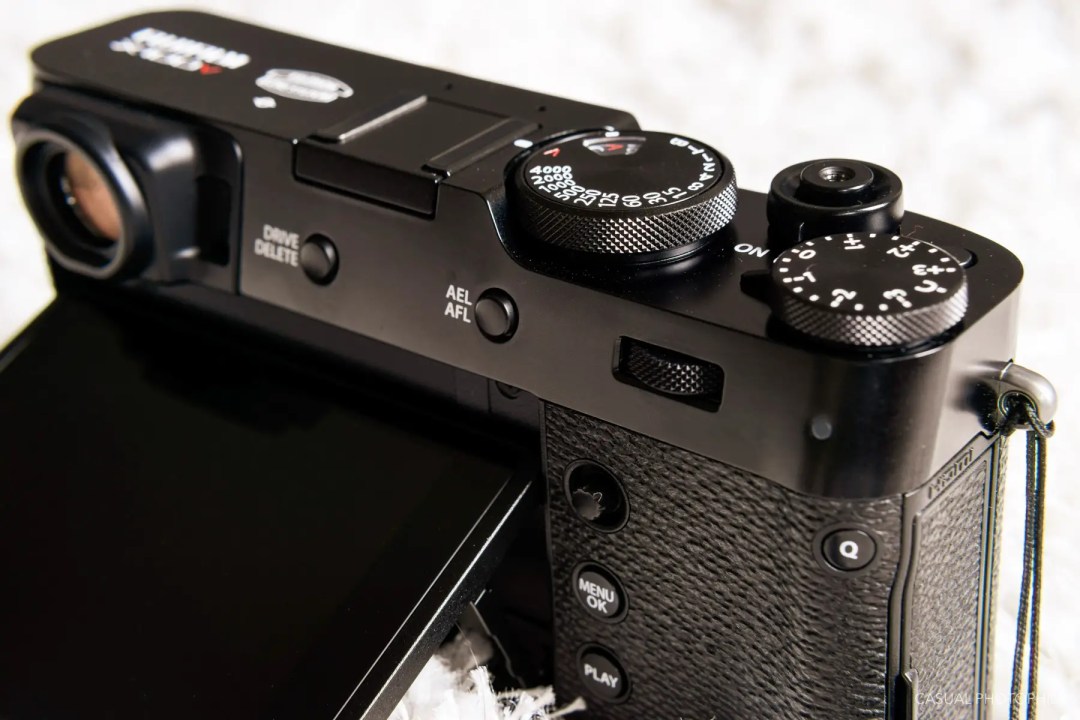
First Impressions
The X100V is quite simply a beautifully designed camera. The top and bottom plates are made of milled aluminum, finished with a satin black or silver paint job and precision engraving. Its silhouette is relatively blocky in design, but a combination of tasteful curves and clean edges make the camera mesmerizing to the eye. All the manual controls are smooth in operation, yet satisfyingly clicky and textured for grip. The control layout on the camera is organized and minimal, making it feel more approachable and intuitive. And the fixed 35mm equivalent lens is a true pancake, protruding only about an inch from the body, keeping the camera’s profile respectably slim.
As with all X100 models, it’s hard to tell at first glance that this thing conceals a digital APS-C sensor and not a 35mm roll of Kodak Portra. Fuji’s designers definitely looked to the classics when designing the X100 series. The X100V sports the sophisticated looks of a 1970s film rangefinder camera, complete with an optical viewfinder window on the front of the body. Overall, the camera is somehow inconspicuous yet eye-catching at the same time, which can make it a bit of a conversation piece. Expect to field a few unsolicited conversations about what camera you’re carrying and whether or not it shoots film.
Of course, all this beauty doesn’t come without a price tag. The X100V retails for $1400, and at this price-point, I probably wouldn’t recommend it to photographers on a tight budget. But I wouldn’t classify this as a luxury camera either, as it’s not nearly as expensive as a Leica and falls a couple hundred short of Sony’s most premium compact. Considering the build quality and performance you get with the X100V, I think the price tag is fitting, though I think Fuji could have cut some corners to make it more accessible and closer to the $1000 mark.
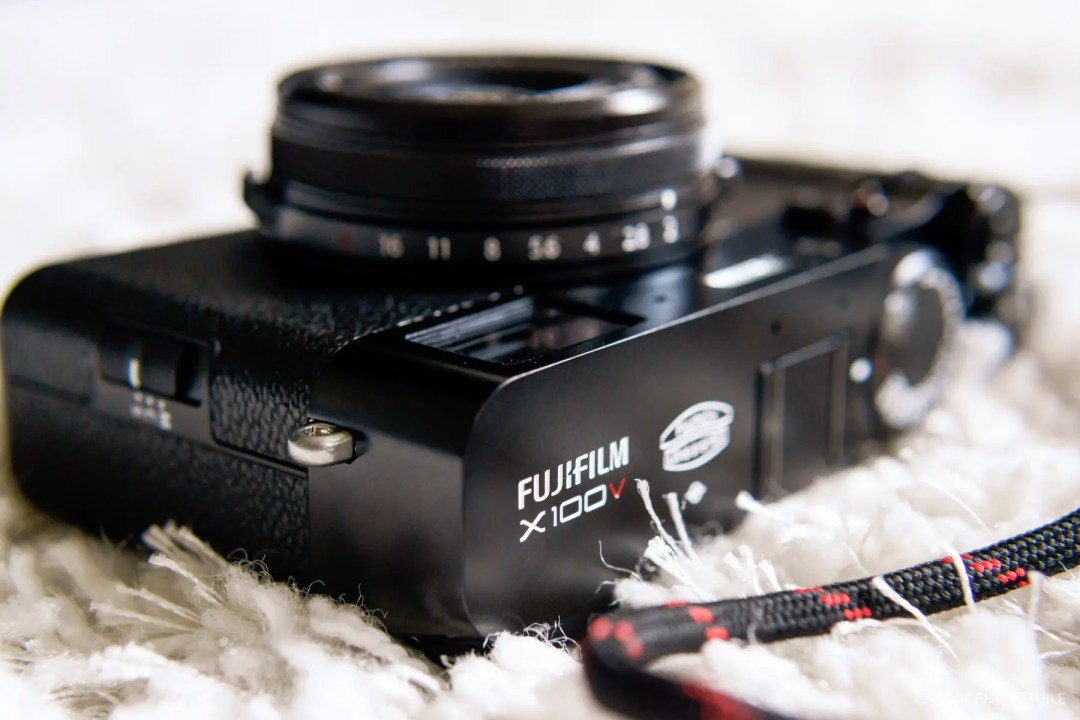
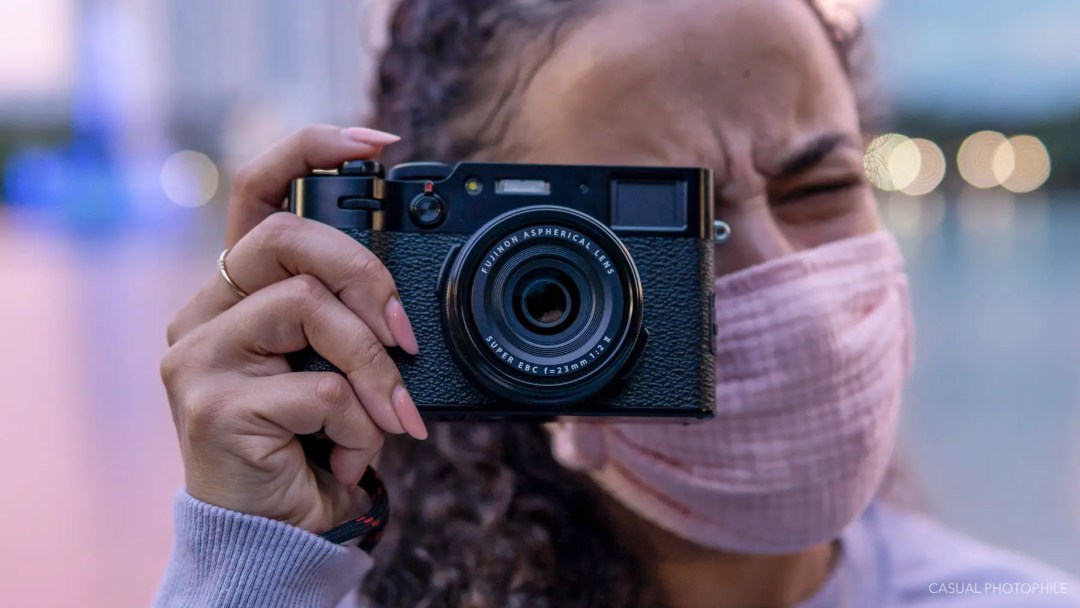
Handling
Due to the premium build materials, the X100V has more heft and width than I initially expected, but its form factor still wholeheartedly maintains the compact camera moniker. It’s light enough to keep slung across the body or around the neck for all-day adventures, and slim enough to slip in a small bag or purse with room for your essentials. The X100V isn’t definitively pocket-sized though; it probably won’t fit in most jean pockets, but it could easily fit in a coat pocket or in the pocket of your favorite fanny pack (yes, these are back in 2020).
The X100V hits a perfect balance between size and usability for a compact camera. It felt right at home in my hands, providing just the right amount of real estate to operate the camera comfortably. The grip area provides some attractive curvature as well as functional security. It consists of a subtle bump on the front right of the body, which provides a spacious resting place for your forefingers, and a shallow ridge on the back that fits nicely in the crease of your palm. I never felt like I would drop it, but people with larger hands might want to add a third-party grip for a more robust handhold.
During my time with the camera, I noticed excessive heat generation in the grip with continuous shooting. Nothing I’d consider too uncomfortable or skin-searing, but it’s certainly noticeable. Some quick research shows that the X100V has some overheating issues, which Fujifilm has acknowledged as a result of circuit board placement and high-temperature environments. Testing shows that, in most cases, overheating only really becomes an issue when shooting extensively at 100+ degrees Fahrenheit. Luckily, despite shooting in Florida’s unbearable summer heat, the camera never got too hot to handle or shut down on me.
The manual controls on the X100V play a major role in making this thing a joy to shoot. Those who shoot film will surely appreciate the familiar feel of the X100V. The top plate is home to the dedicated exposure compensation dial and the shutter speed dial, which you can also pull up to change the ISO. Here you’ll also find the power switch and a traditionally threaded shutter release button. The aperture dial lives on the lens, seated right behind the manual focus ring, and provides one-third increments between full stops (f/2-16). All the dials are smooth in operation but click into place with affirmation so you can make exposure adjustments without looking.
Speaking of exposure, the X100V has no frills. You have to have at least some experience with manual or semi-auto exposure as there are no real consumer-focused auto modes that ensure a beginner can pick this thing up and get professional results. It only offers typical PSAM modes, with no apparent markings on the body of the camera like there normally are with most other digital cameras. You have to switch the shutter speed dial to A for Aperture Priority, the aperture dial to A for Shutter Priority, or both to A for Program.
Of course, there is a variety of focus, image processing, and camera customization settings to access within the X100V’s digital menu system, which feels less cluttered and more user friendly to navigate than other digital menus I’ve used. But the most important settings can only be changed via the physical controls. Even the autofocus modes have a dedicated switch on the left side of the camera. As a result, I never needed to do any extensive menu diving aside from my initial customization setup. But there are some options that you might need to access from the menu on occasion, such as your focus point, white balance, flash, and metering options (Photometry in Fuji-speak). Luckily, the X100V allows you to customize the quick menu (the Q button) as well as remap most buttons and touch controls.
Weather sealing is also a welcome addition to the X100V’s feature set, allowing you to take this thing out in all kinds of conditions. But there’s a catch. The X100V is only partially weather-sealed out of the box. To fully seal the camera, you need to purchase the Fujifilm AR-X100 Adapter Ring (~$47) and attach any 49mm filter. It’s annoying to have to go the extra mile to completely protect the camera, but I think it’s worth it for those occasions when you want to take the X100V into the elements.
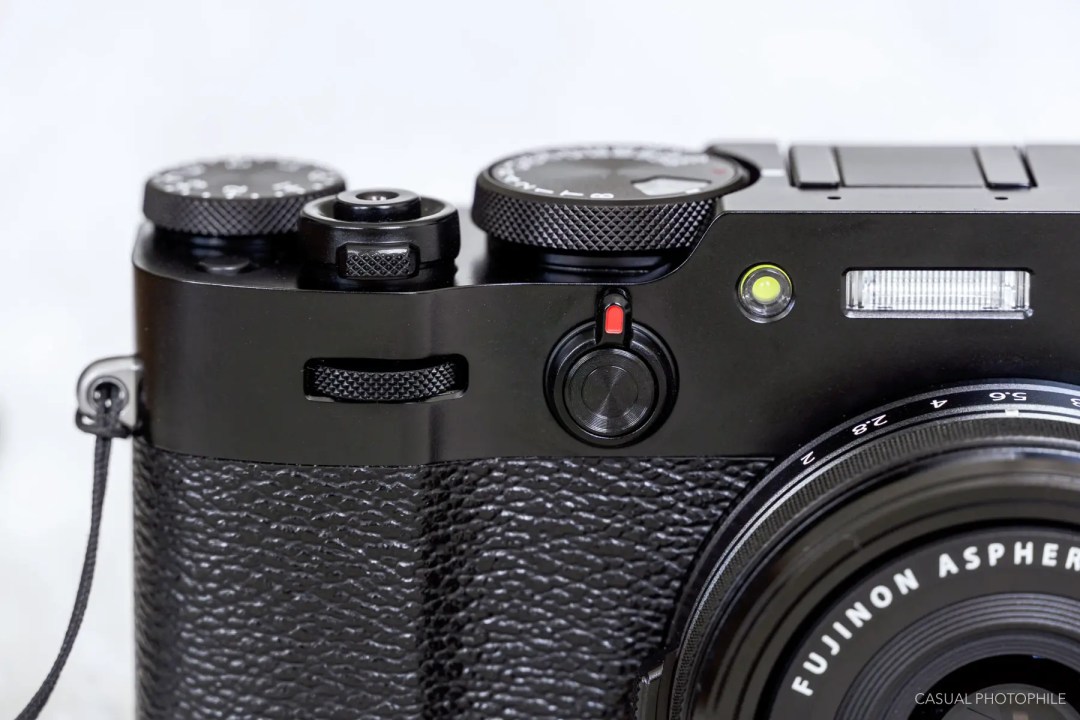
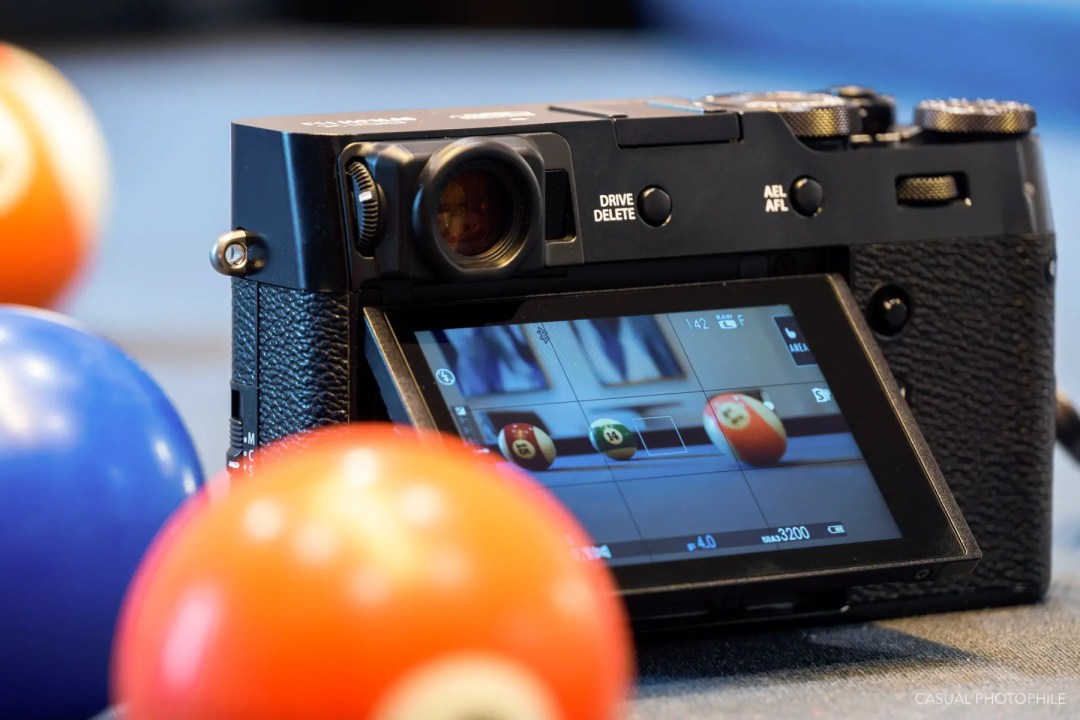
LCD and Viewfinder(s)
With the X100V, Fuji has graced our eyes and hands with a high-definition, 180-degree-tilting, touchscreen LCD display. At 1.62 million dots, the screen is vibrant, crisp, and contrasty—perfect for showing off Fuji’s renowned color science even in direct sunlight. The tilting screen is a simple upgrade, but a first for the X100 series, providing the shooter with more composition options. The screen itself is recessed into the back of the camera, so the only way to flip it out is by pulling on a small tab on the side with the tip of your finger. It’s not as quick to operate as the tilting LCD on my Sony A6000 (reviewed here), but the fact that it’s recessed adds to the refined look and feel of the X100V.
The touch screen is also a first for the X100 series, though it comes at the price of the usual four-way control pad, which has been replaced by a combination of touch gestures and a navigational joystick. This trade-off keeps the back panel as minimal as possible without sacrificing functionality. Previous X100 shooters might miss the control pad, but I feel the joystick is a step up in terms of navigation speed, and the touch gestures are completely customizable and work like a charm (though I have triggered them unintentionally on occasion). Speed-wise, the touch capabilities make it quicker to select your focus point. You can even select focus with your eye up to the viewfinder by dragging your finger across the LCD, which turns off automatically with a proximity sensor built into the eye-piece. Let’s also appreciate the fact that Fujifilm made the X100V smart enough to disable the proximity sensor when you’re shooting with the LCD flipped out and close to your body. It’s the little things that count.
The viewfinder of this camera is probably its most unique feature and one of my favorites. The X100V sports a rangefinder-style hybrid viewfinder, which you can toggle between an optical (OVF) or an electronic viewfinder (EVF) by flipping the viewfinder switch on the front of the camera. This hybrid design is the same as previous X100 models but upgraded with a 3.69 million-dot OLED panel for the EVF and a larger OVF with 0.52x magnification. Aside from the improved definition, there’s nothing particularly special about the EVF. It’s crisp, clear, bright, and displays the usual focus and mode indicators so you know how you’re taking the photo and exactly what you’ll get.
On the other hand, the OVF is one of those factors that makes using the X100V such a joyful experience. It really solidifies the feeling that you’re shooting an analog rangefinder camera, minus the rangefinder patch. While using the OVF, you’re basically looking through a glass tunnel with digital frame lines and indicators superimposed on its surface. Because of this, you’re looking at the scene from a slightly different angle than the lens. However, the frame lines automatically shift to correct for parallax and focus distance, so you’ll have a pretty good idea of what area of the entire scene will end up as your final image. In practice, I found it difficult to predict where my focus point would fall based on distance and parallax correction. But luckily, you can flip the viewfinder switch to the left to display the Electronic Rangefinder (ERF), which is a small EVF that pops up in the corner of the OVF. Coupled with focus peaking, I was able to use it to make focus adjustments easily.
Despite some unpredictability with the OVF, I almost exclusively used it with the ERF function in my testing just because it was so much fun to use. It’s also worth noting that the OVF saves on battery power, as Fujifilm claims you can squeeze in around 420 shots on a single charge, as opposed to 350 with the EVF. While battery life typically depends on shooting style, I’d probably pick up at least one extra battery to keep with me for longer outings.
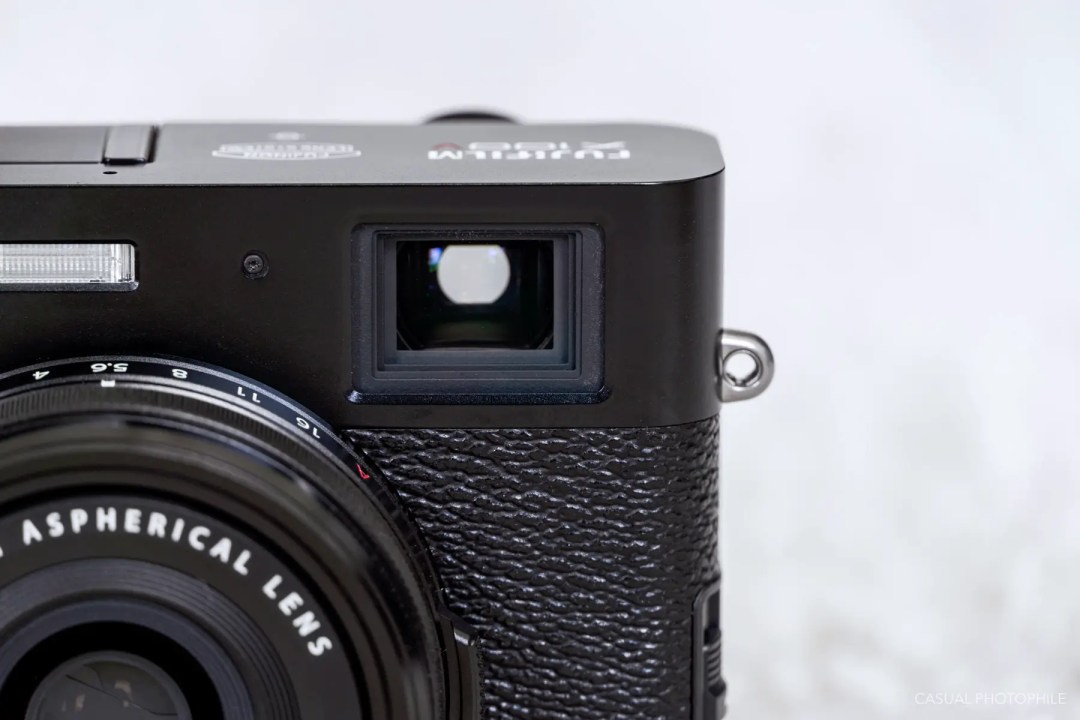
A Redesigned Lens
The X100V introduces a newly redesigned Fujinon 23mm f/2 lens that is a major upgrade to the one attached to previous models. The new lens isn’t any different in looks, but on the inside, Fujifilm worked its magic to ensure higher resolution, lower distortion, and much better close-focus performance. The 23mm fixed focal length of the X100V translates to a 35mm full-frame equivalent (34.5mm to be exact), which is often praised as one of the most versatile focal lengths you can use. With a semi-wide point of view, this prime lens will feel at home shooting street, travel, documentary, landscape, and contextual portrait photography. While a zoom lens seems typical of most compact cameras, I personally like the minimalism and challenge of having one focal length to work with because it forces me to think intentionally about each shot. However, if you’re willing to sacrifice a bit of image quality for more options, the X100V offers in-camera crop modes (50 and 70mm equivalent) as well as add-on wide and telephoto conversion lenses at $350 apiece.
The lens performs superbly throughout the entire aperture range, sharp from f/2 to f/16 at normal focus distances. I was actually pleasantly surprised at how sharp photos were wide open and had no qualms shooting at f/2 or 2.8 when I needed more light. In my testing, I didn’t notice any concerning softness, light fall off, distortion, or chromatic aberration that needed correction. Everything about this lens is nicely controlled, whether that’s by optical design or in-camera corrections I’m not sure. But either way, I really like the way this lens renders scenes.
While previous X100 models suffered from poor close-focusing performance, Fujifilm updated the lens design to address this weakness -the X100V is capable of focusing as close as 10 centimeters. There’s still some softness and halo effects at close-up range, but it’s a huge improvement over past models. I personally think the way the X100V renders close-focus shots offers character to the final image. Additionally, with nine aperture blades, this thing can provide some creamy backgrounds, though as a semi-wide-angle lens, I wouldn’t expect stunningly creamy bokeh unless you’re purposefully close focusing.
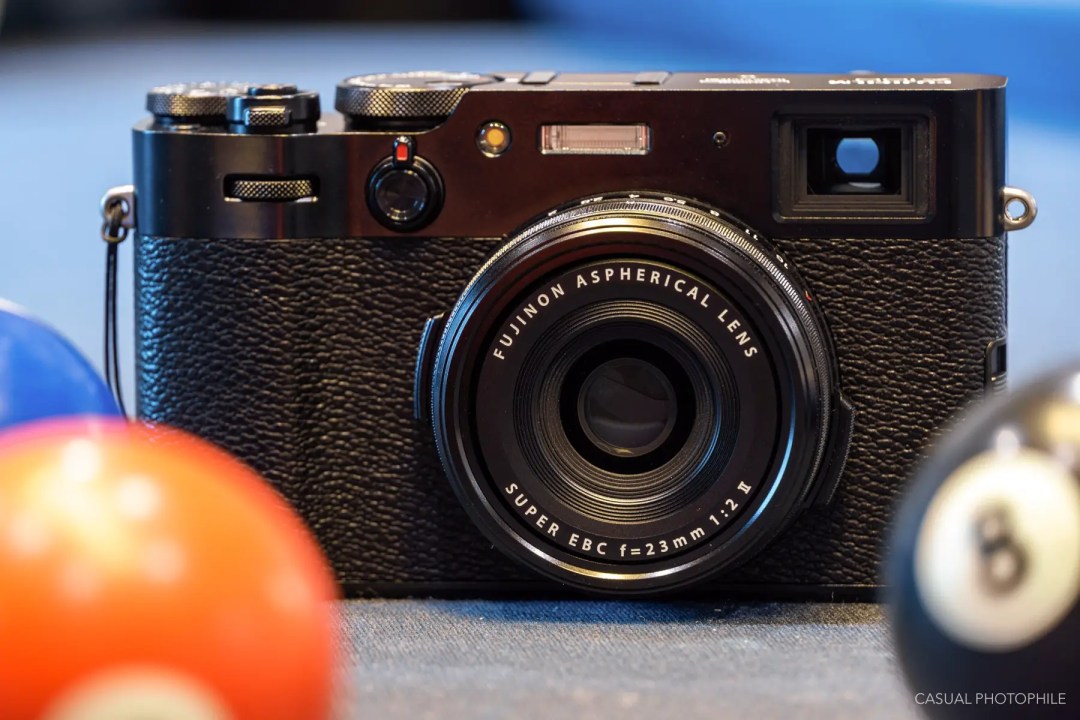
Image Quality
To match the superb rendering of the redesigned lens, Fujifilm packed the same 26 MP X-Trans sensor found in the X-Pro3 and X-T3 into the X100V, so it’s resolving power is on par with some of the most advanced professional cameras on the market. Consequently, the images you can create with the X100V are nothing short of exceptional. Results from this camera exceeded my expectations in all categories of performance, particularly dynamic range, ISO, and color science.
You don’t typically find an APS-C sensor packed into a compact camera, so naturally, the X100V has an edge over most offerings in its category, which typically use 1-inch or smaller sensors. Overall, I found that the X100V consistently exposed my images with adequate dynamic range, leaving a good amount of detail within its deep shadows and well-exposed highlights. RAW files provided the expected amount of flexibility, allowing me to reveal most, if not all, detail lost on the occasions when I missed exposure. You can further optimize the dynamic range sensitivity through the D-Rng feature in the menu, which subtly boosts detail in the highlight and shadow areas based on your ISO settings. I set D-Rng to Auto, as I trusted the camera enough to decide when I needed more dynamic range. I was not disappointed with any of the results. For photographers looking for more dramatic results, the X100V also has an in-camera HDR mode, which is another new addition to the X100 series.
The X100V’s native ISO settings range from 160 to 12800 and have the ability to expand down to ISO 80 and up to ISO 51200. The native base ISO isn’t as low as my Sony A6000 (ISO 100), but it’s still an upgrade over the X100F’s base ISO of 200. At ISO 160-400, I found my photos to be sharp, noise-free, and rich in detail, which I fully expected. But the high ISO performance of the X100V is what really blew me away.
I was surprised to find that images still look sharp and detailed at ISO 3200, which tends to produce muddy results on my A6000. I limit my A6000 to ISO 1600 and lower for the cleanest possible image, but with the X100V, I had no issues shooting at higher values when I needed the extra sensitivity. Even its highest native ISO produced quite usable results. Though there is some noise on full-screen inspection, the camera does a commendable job of controlling the noise, allowing me to make some really clean images in low-light indoor situations where I wouldn’t be able to otherwise. The high ISO performance alone made me forget my desire for image stabilization, which is something Fujifilm has yet to include in the X100 series.
As a Sony user, I’m used to shooting in RAW and editing for color later. So you can imagine that I was genuinely taken aback when I found no need for any color corrections in post-processing. At that moment, I actually considered shooting only JPG files for the duration of my testing, and I believe this is one of Fujifilm’s intentions with the X100V. The images just feel right straight out of the camera. It feels like shooting film—like this is how the picture should look. I chalk this up to Fujifilm packing 80+ years of color science expertise into their now-iconic film simulations, which recreate the looks of classic film stocks like Provia, Velvia, Asita, Acros, and Eterna.
Each film simulation has its own strengths, but my personal favorites ended up being Astia for everyday photography, Velvia for landscapes and nature, and Classic Chrome or Acros for street and urban scenes. You can also experiment with the color science of the existing film simulations to recreate the look of other films like Kodak Portra. For me, the film simulations add a note of simplicity to the overall intentional experience of shooting the X100V; they make each shot look great off-the-bat and feel more purposeful.
The images produced by the X100V made me rethink and simplify my photography workflow for these sample images because they needed such little attention in post-processing. With the in-camera RAW conversion tool, I even considered cutting Lightroom out of my workflow entirely. But in the end, old habits die hard. I still imported the RAW files into Lightroom. But other than adjusting shadows and highlights on occasion as well as cropping and straightening, I left many of the sample photos in this article untouched. Despite my personal habits, the X100V spotlights the idea that a compact digital camera can produce professional-level results straight out of the camera.
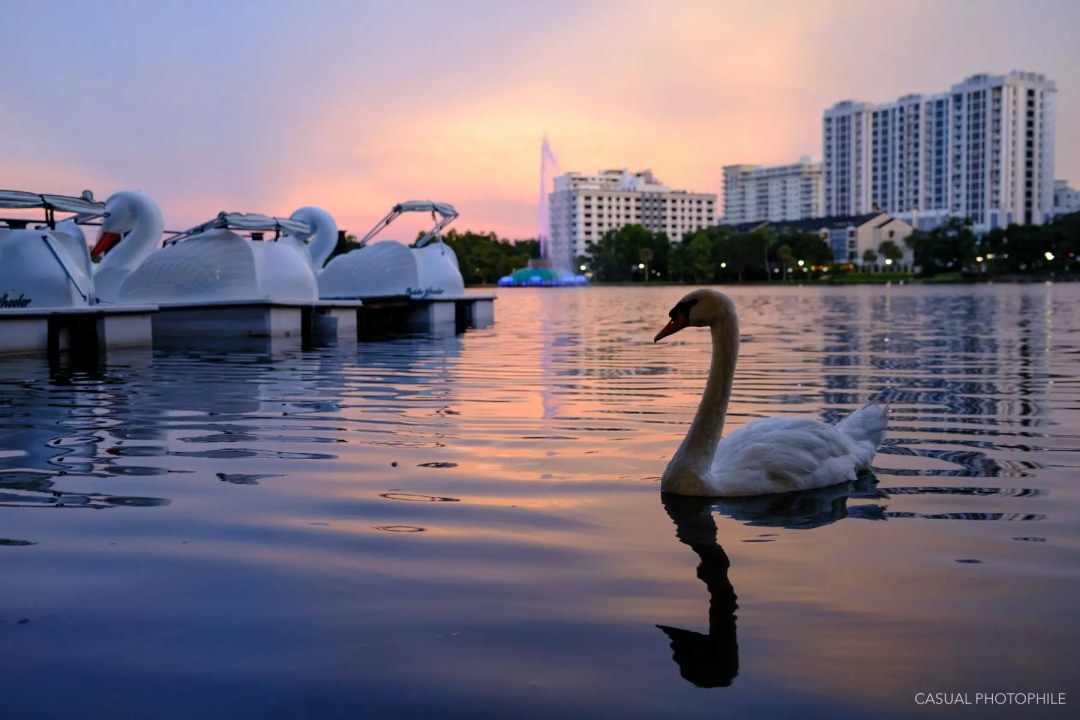
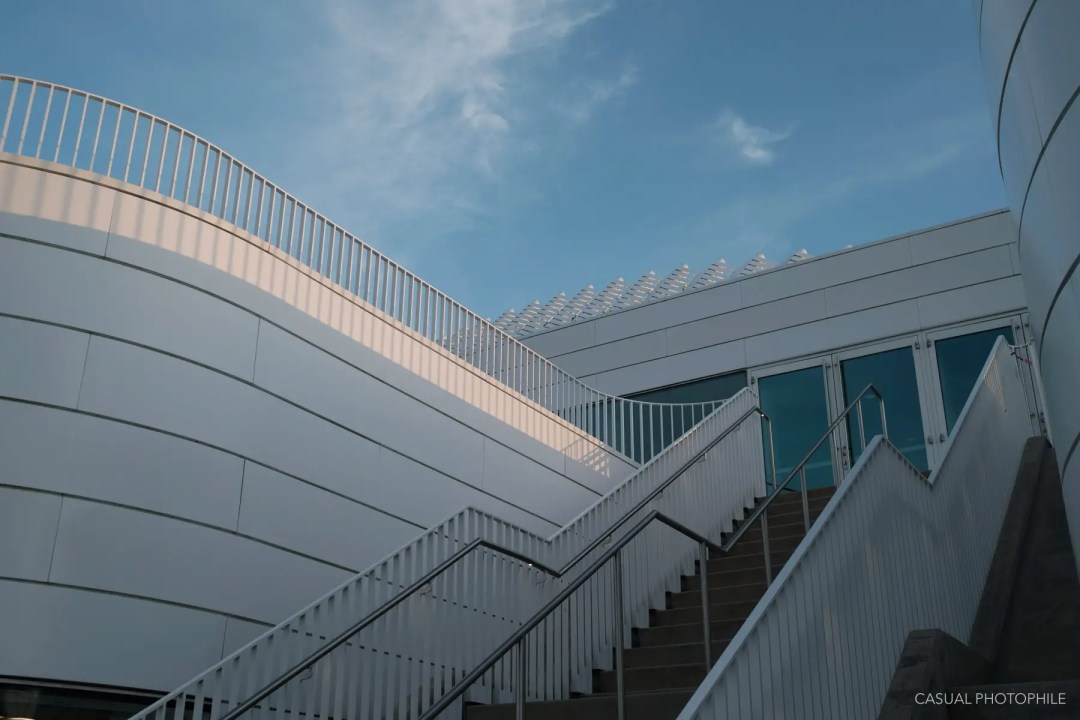
Focus and Camera Performance
With the new X-trans sensor, the X100V benefits from the autofocus performance of Fujifilm’s more professional APS-C cameras, and I have little to no complaints about it. In terms of speed, autofocus is not instantaneous, but it’s respectably quick in good lighting as well as in low light situations, which by all accounts is a noticeable improvement over past iterations. I found that the camera only really hunted for focus in extremely dim areas. Its accuracy is on point as well. After the camera locked focus, I rarely found it necessary to refine my focus manually as I tend to do with my A6000. Fujifilm integrated a newer and faster AF motor as a result of the new lens design and it’s honestly noisier than I expected. Not really knocking the AF performance or usability of the camera by any means, but it’s something to keep in mind while shooting in quiet environments.
At a total of 425 hybrid focus points, frame coverage is improved compared to the X100F. The X100V utilizes these points through just two autofocus modes, which you choose using a dedicated switch on the side of the camera: Single (AF-S) and Continuous (AF-C). In terms of selecting focus, the camera offers Single Point, Zone, and Wide/Tracking AF area modes. There’s also an All option, which essentially allows you to cycle through the other three modes without entering the digital menu. With the Zone and Wide/Tracking modes, the X100V limits you to a 9×13 grid of 117 focus points. I assume this is to ensure the fastest possible focusing across the frame. But if you are using the Single Point focus area or Manual focus mode, you can increase the number of focus points to the full 425 in a 17×25 grid for more precise focusing. I tended to keep the camera in AF-S with the Single Point focus for the majority of my testing, just because I felt that provided the most flexibility and fit the style of photography this camera was designed for.
For moving subjects, I switched to AF-C with Zone focus, with which I was able to accurately track subjects for portraits and candid street shots. Fujifilm has also improved the X100’s Face and Eye Detection features, both of which you can use simultaneously. In my testing, these features worked quite well despite a couple quirks. Interestingly, the camera can detect multiple faces in a scene and allows you to select which one you want to lock focus on with Face Selection, but this functionality can only be used when assigned to a custom button. In terms of Face Detection performance quirks, there were a couple occasions where I was composing a scene with no people and the camera stole focus to center on a “face” that turned out to be a chair or blob of trees somewhere in the distance. In addition, I noticed that that Face Detection also overrides your chosen photometry (metering) mode, so exposure results can vary if you forget to disable it.
The X100V also offers several AF-C customization settings to refine subject tracking performance as well as the Sports Finder crop mode found in the X-T3. And with a whisper-quiet hybrid leaf shutter that can freeze motion as fast as 1/4000th mechanically or 1/32000th electronically and capture bursts at 11 or 20 FPS respectively, the X100V is capable of some lightning-fast shooting. However, the additional AF-C settings and dedicated Sports Finder mode feel out of place in a niche camera like this and just add more clutter to the digital menu. With a 35mm equivalent fixed lens, the X100V isn’t exactly designed to be your tool of choice for capturing Nat Geo-style animal chase scenes or ESPN buzzer-beater moments.
In addition, while the camera’s X-Processor 4 makes it noticeably faster to write photos to memory than the previous X100 models, the buffer still seems to be fairly shallow, which might irk trigger happy photographers who love to take burst shots. Luckily the camera doesn’t lock you out completely and you can navigate the camera as normal while it’s writing to memory.
Manual (M) focus is the last option on the focus mode switch. There’s not much to mention about it since it’s only as accurate as the photographer. And with the Focus Peak Highlight feature enabled, focusing is a no-brainer. The only thing I can really say is that the focus ring is on the skinnier side, and sometimes I found it difficult to get a good grip on the ring despite its gnarled surface. I would have appreciated the inclusion of a tab on the ring to make the focus throw more comfortable from the get-go, but you build muscle memory after a few uses.

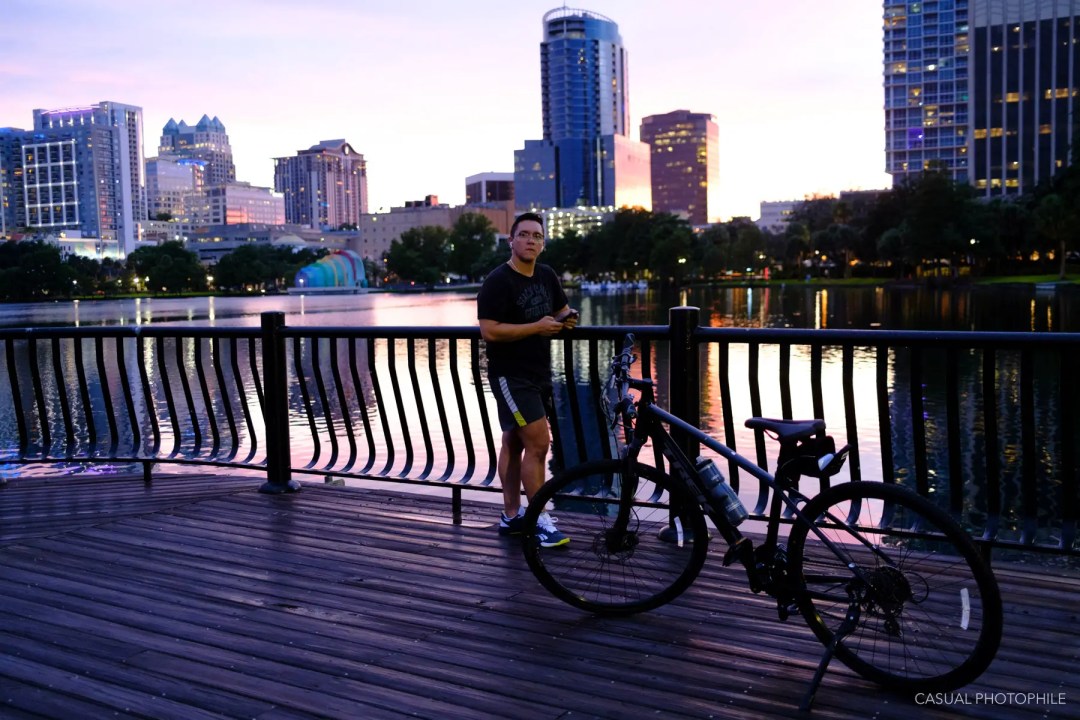
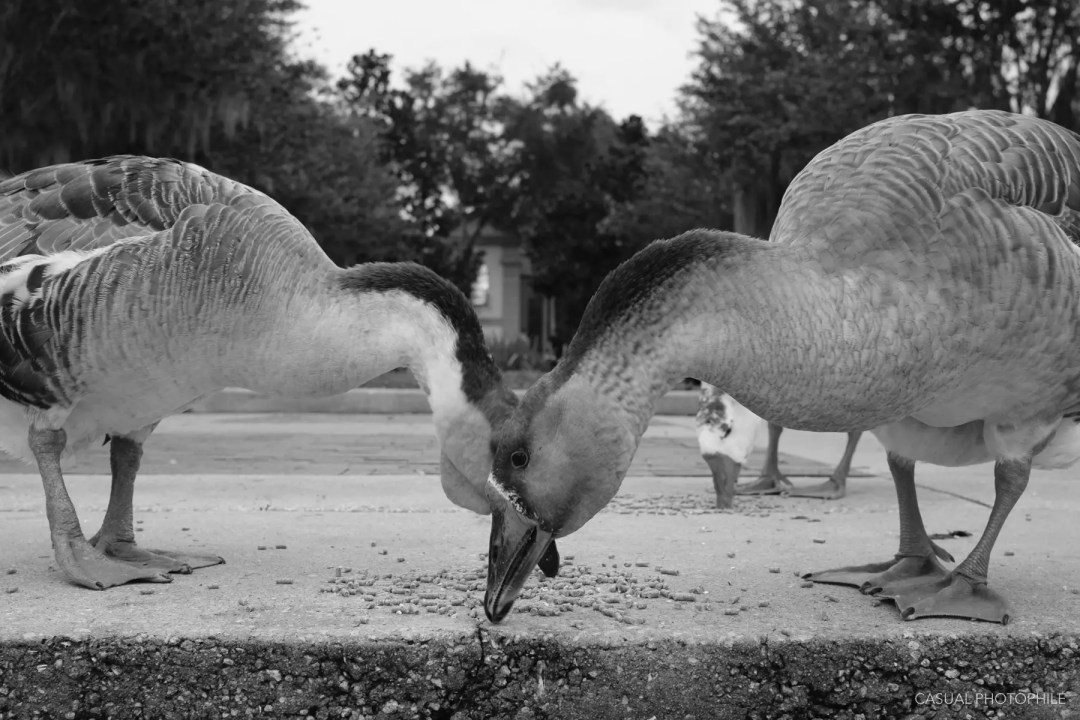
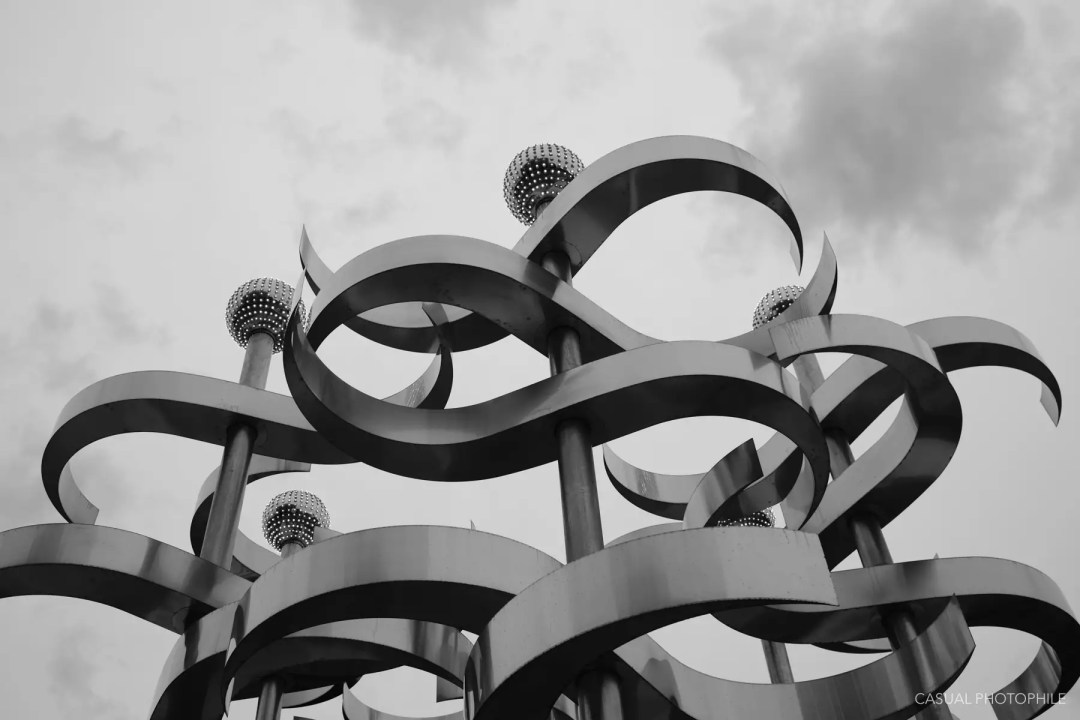
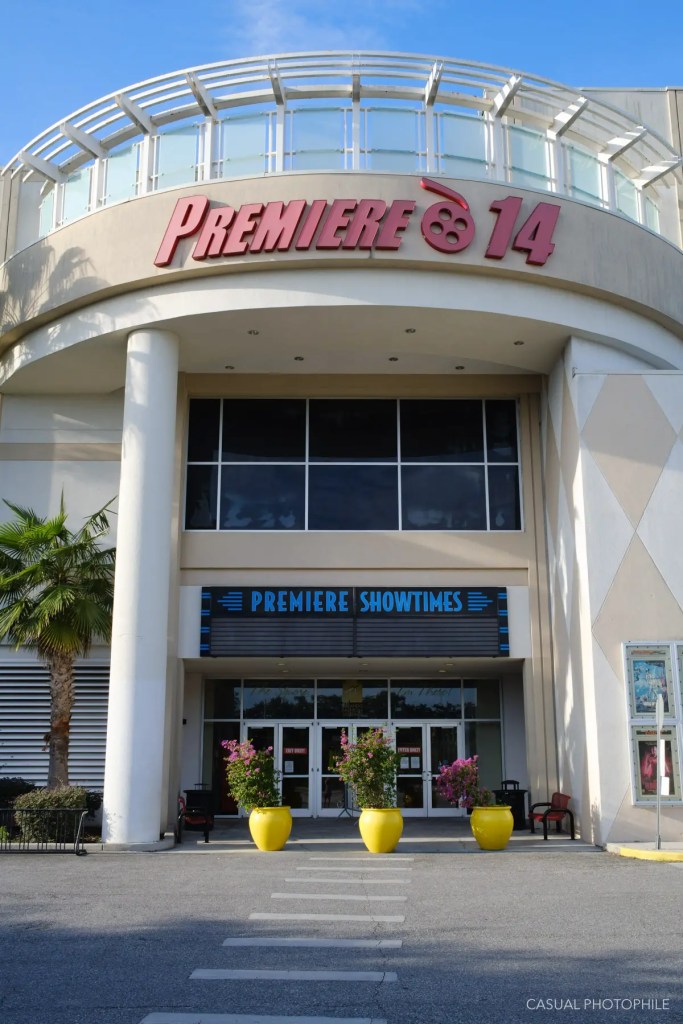
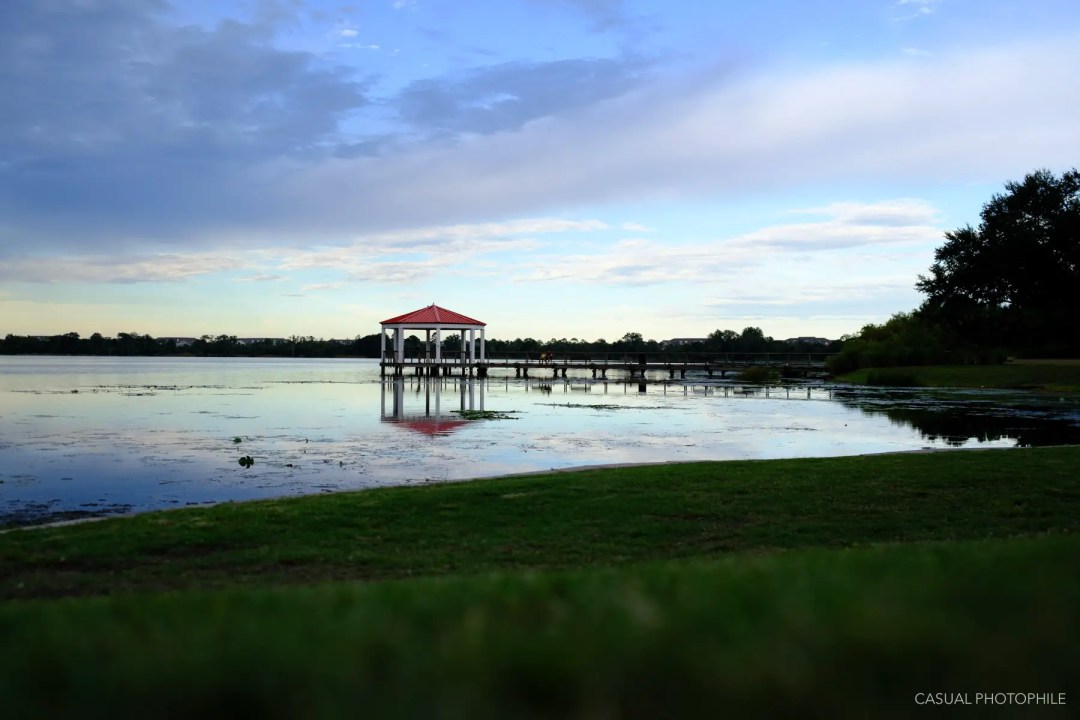
Who’s It For?
The X100V isn’t a camera for everyone. It’s not the camera with the fastest autofocus system; the lens is permanently fixed at one focal length; it’s larger and heavier than you’d expect for a compact camera; it doesn’t feature any hand-holding auto modes; and it’s not exactly budget-friendly. But it fits a niche, and it fits that niche well.
So who is X100V for?
This camera is for photographers who value the shooting experience. Simply put, it’s the main reason one would buy this camera. That seems redundant to say in hindsight, considering all cameras are made to shoot. But all the tactile details of the X100V show that Fujifilm crafted the X100 series to focus on the process of photography and provide a unique shooting experience compared to most, if not all, compact digital cameras on the market. With that said, using the X100V is an inherently aesthetic experience. Everything about the camera appeals to the senses. From the clicky-ness of the physical dials to the whisper-quiet shutter sound, it’s all just so satisfying and a joy to shoot.
This camera is also for photographers who love shooting film. We all know that analog photography provides a distinct connection to the results that digital photography doesn’t quite match. But the X100V comes really close, mixing the intent of film with the instant gratification of digital. Selecting a film simulation provides a purposeful feeling similar to loading a roll into your favorite 1970s film rangefinder. With the eye-pleasing color science of several iconic Fuji film stocks, the resulting images feel good straight out of the camera, no post-processing required.
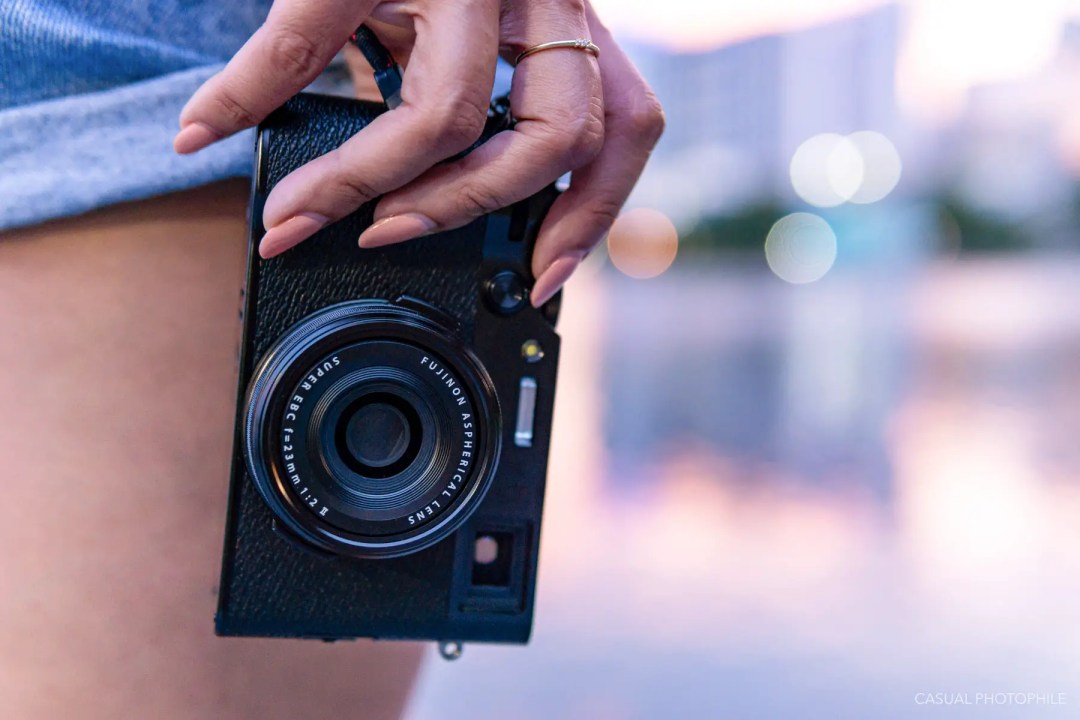
Lastly, this camera is for photographers who feel uninspired by the digital medium. Okay, this last one might be a bit personal, but I know I can’t be the only one with this feeling. The efficiency and perfection of digital photography makes the process feel a bit stale and predictable. I’ve found that I tend to bring out my digital camera only for special occasions and travel, looking to capture the people, places, and things I’m not used to seeing every day. And when I do, I find myself obsessing over perfecting the results of each shot instead of capturing and enjoying the moment.
But the X100V seems to breathe life back into digital photography. It provides the efficiency of digital while still maintaining an analog-level of engagement that slows you down enough to enjoy the moment and the process. With X100V in hand, I felt more present while taking photos, and I actually looked forward to capturing the ordinary and extraordinary alike. Using the camera with the fixed lens, film simulations, hybrid viewfinder, and tactile controls made me put more value on the shooting experience like I do while shooting film.
They say that experiences are worth more than material things. The X100V might technically fall under the material things category, but the experience of using it to capture the world brought me the same sense of joy and excitement I felt when shooting my first film camera. With that, I can confidently say the shooting experience Fujifilm crafted with the X100V is most definitely worth the price tag.
Get your Fujifilm X100V from B&H Photo here
Follow Casual Photophile on Facebook and Instagram
[Some of the links in this article will direct users to our affiliates at B&H Photo, Amazon, and eBay. By purchasing anything using these links, Casual Photophile may receive a small commission at no additional charge to you. This helps Casual Photophile produce the content we produce. Many thanks for your support.]

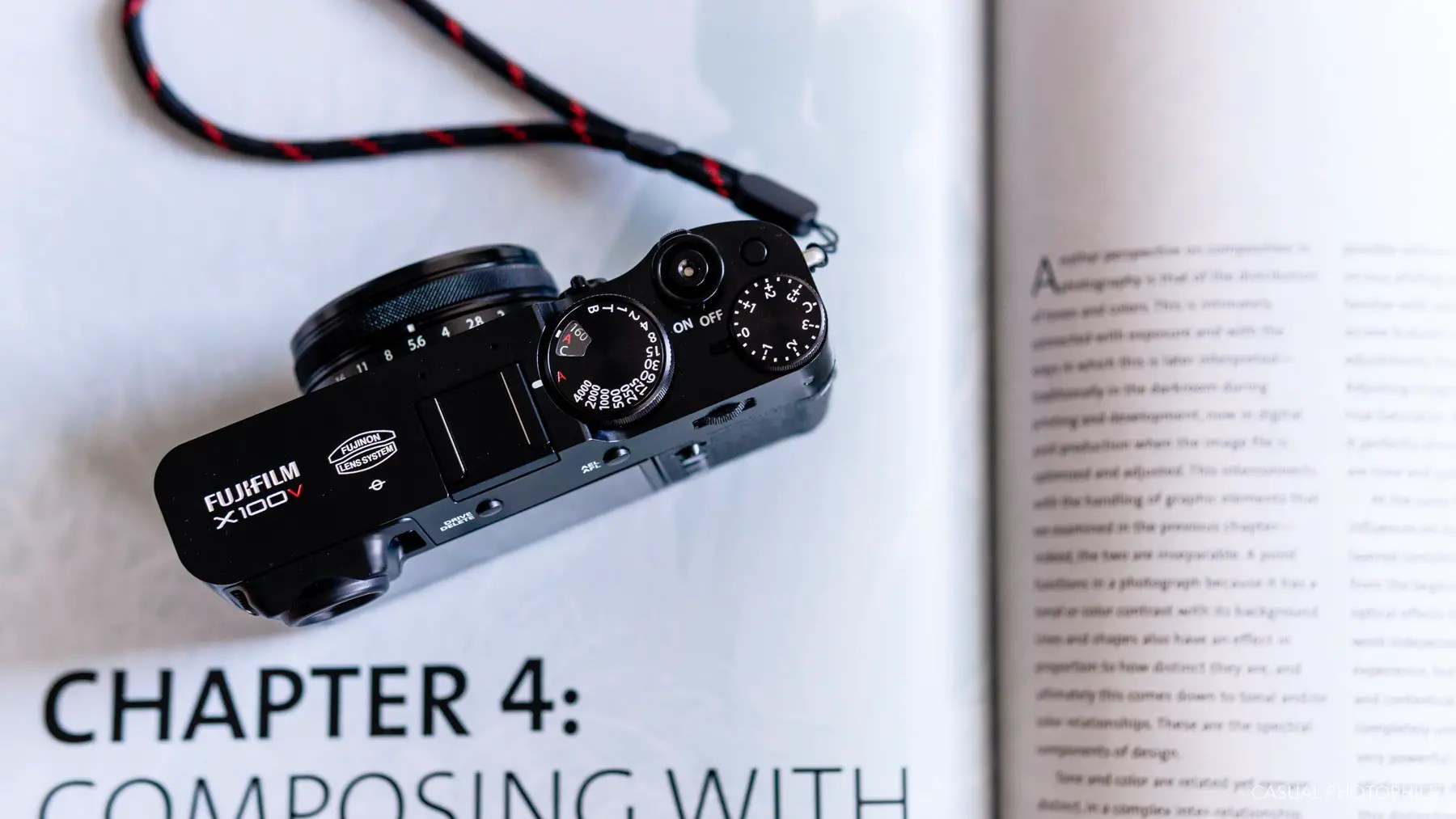
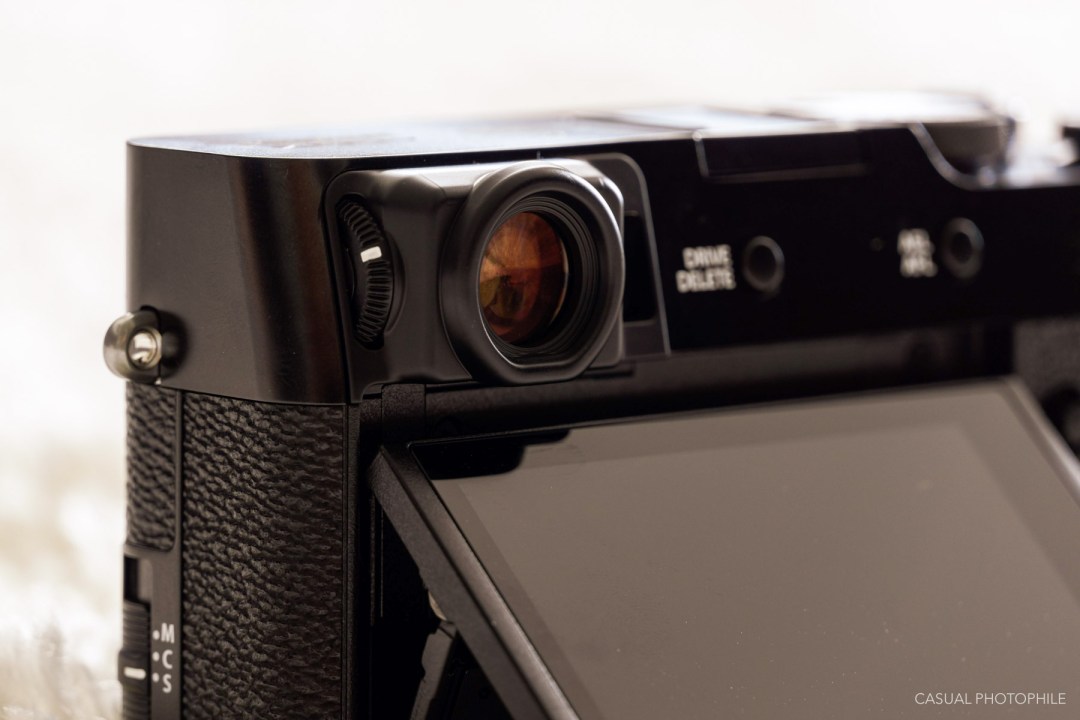
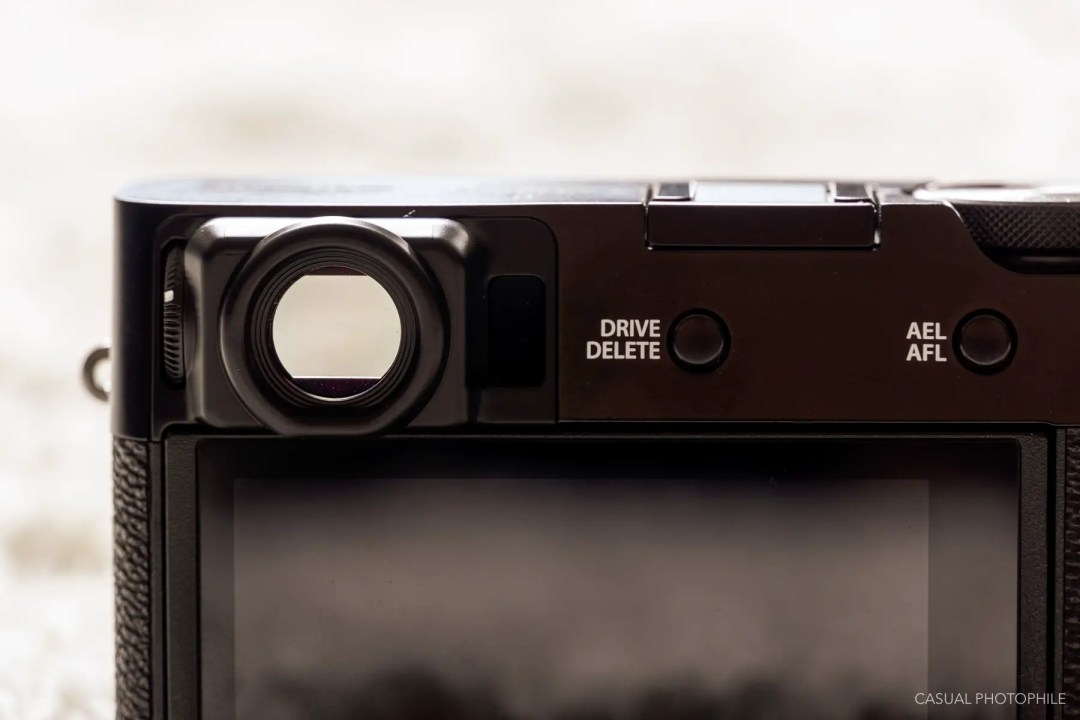
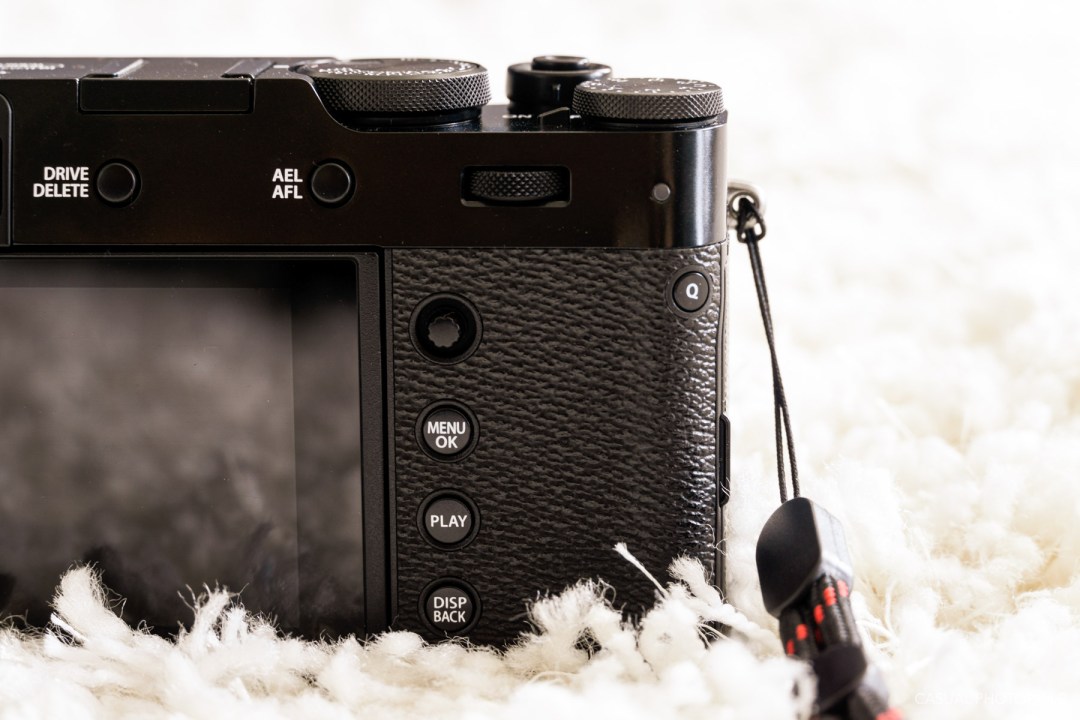

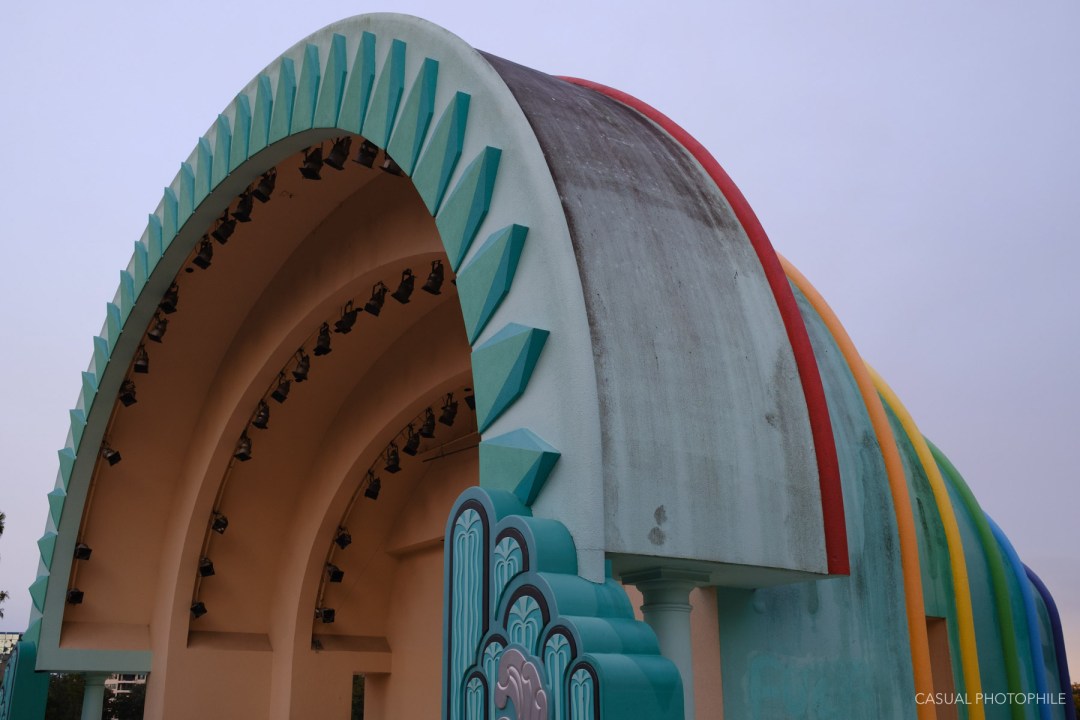
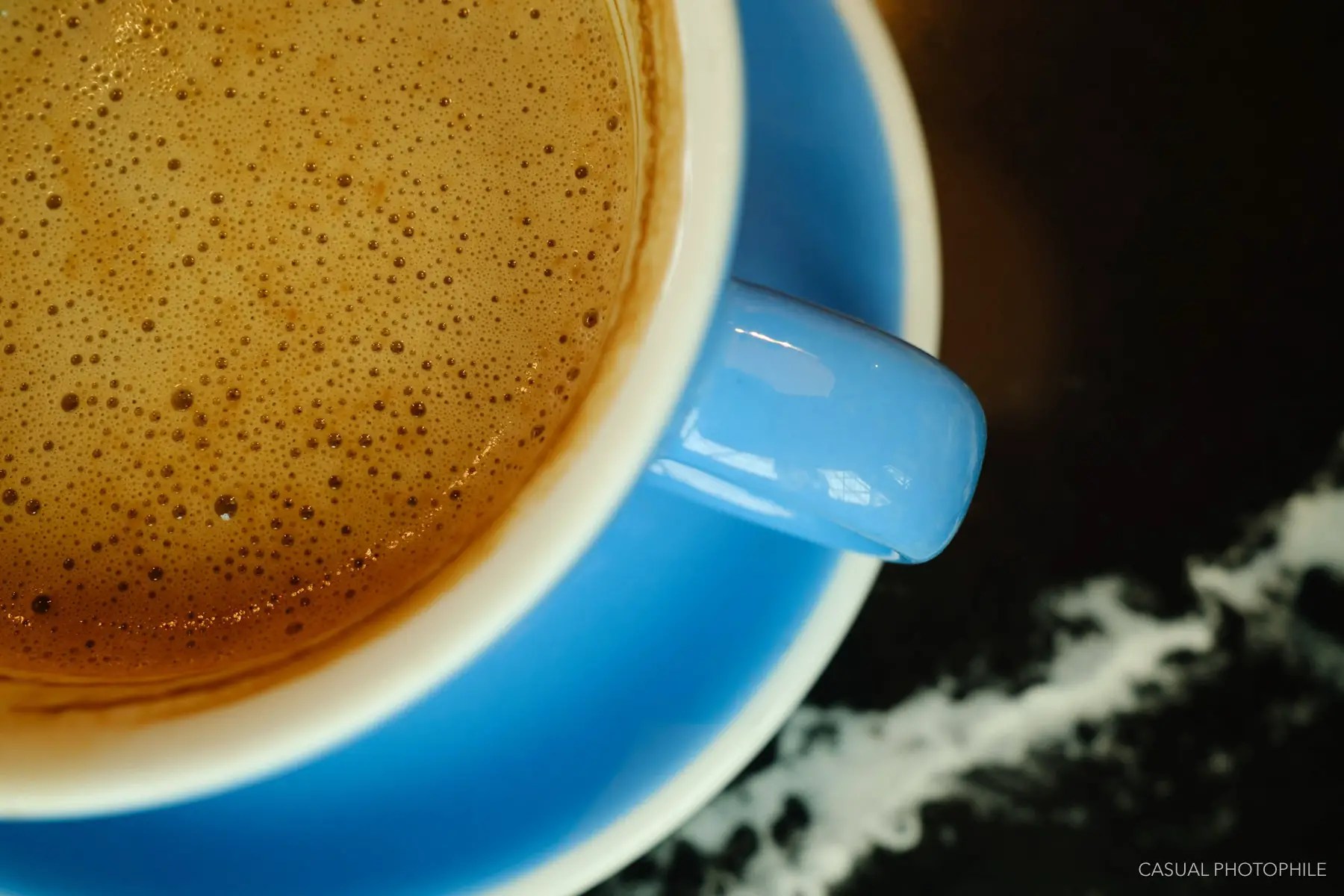
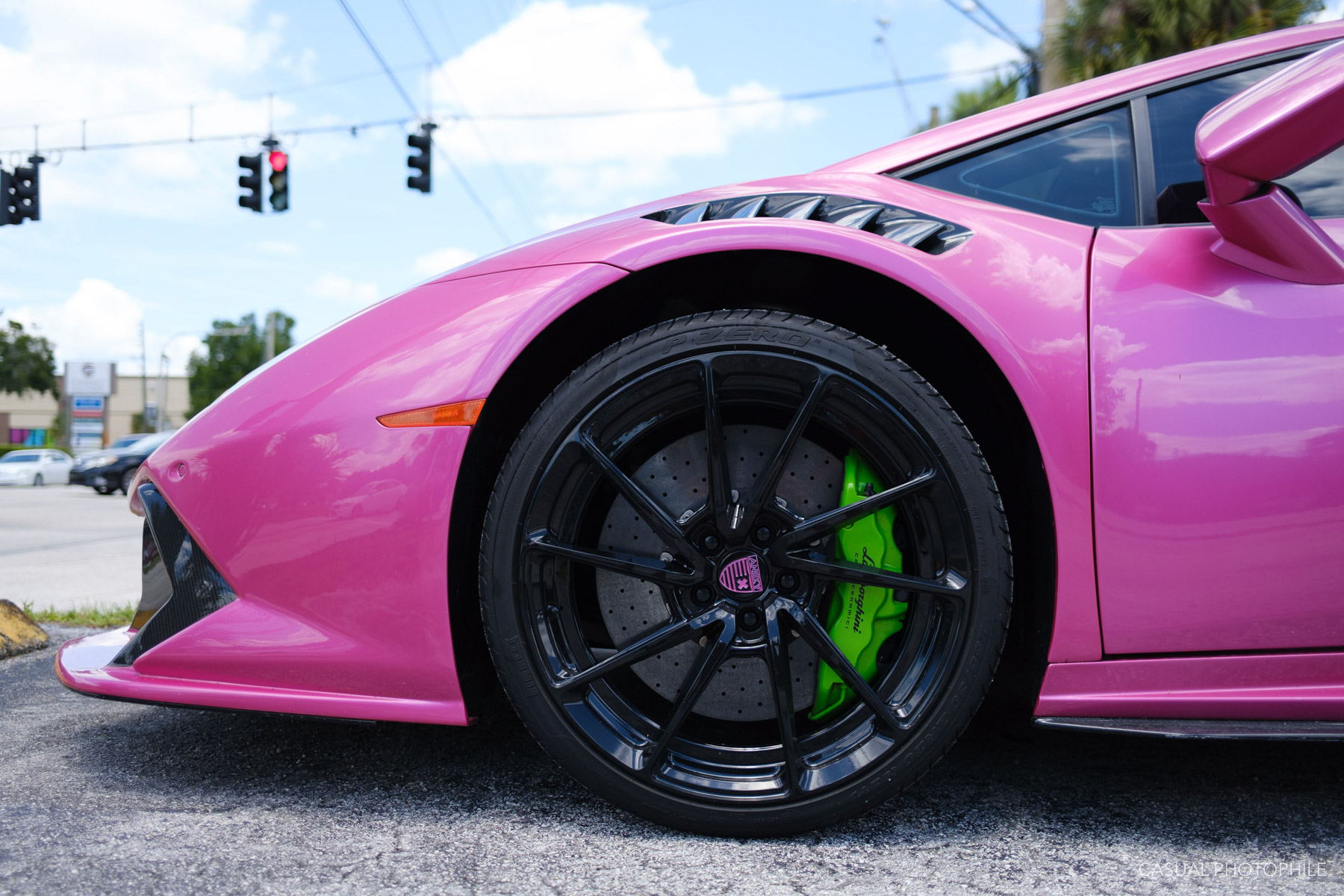

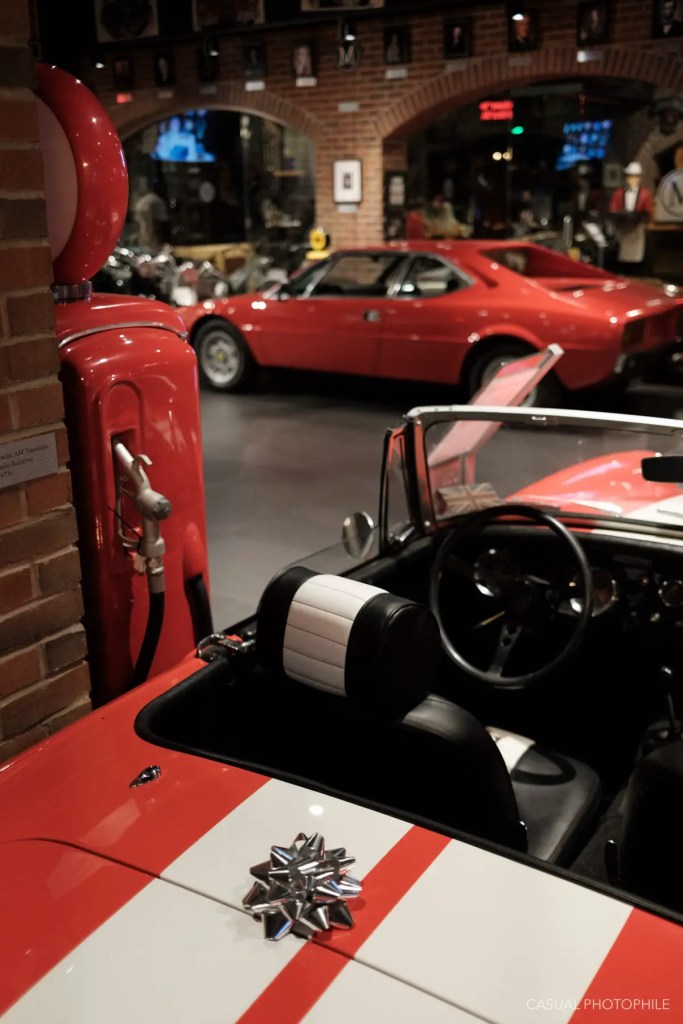
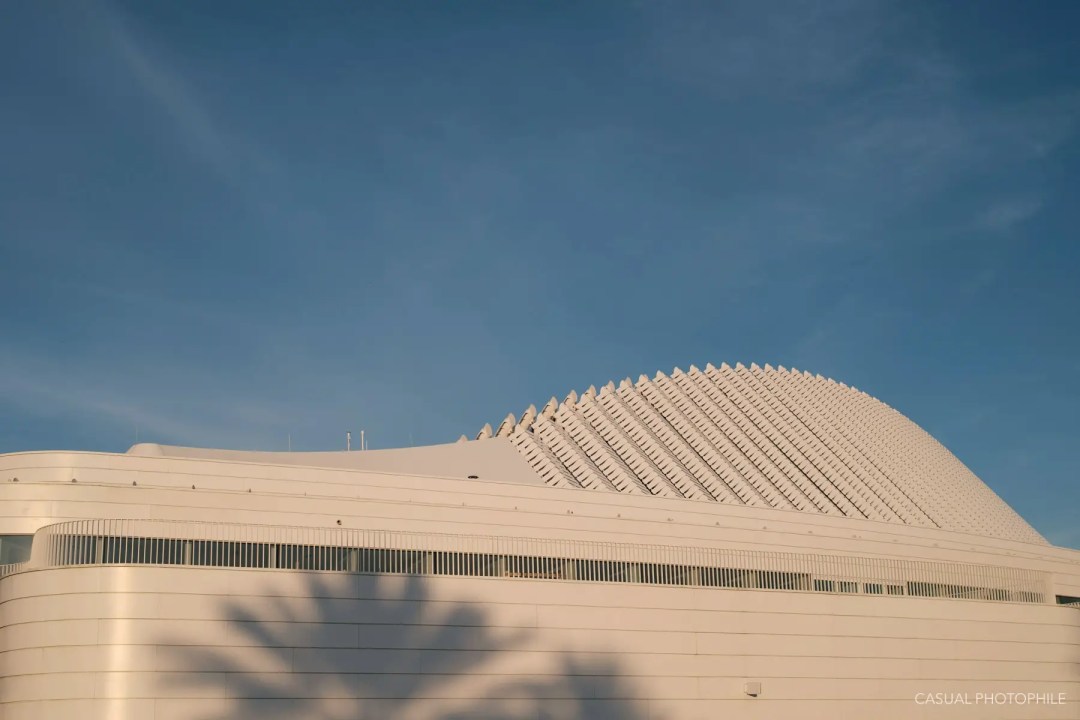
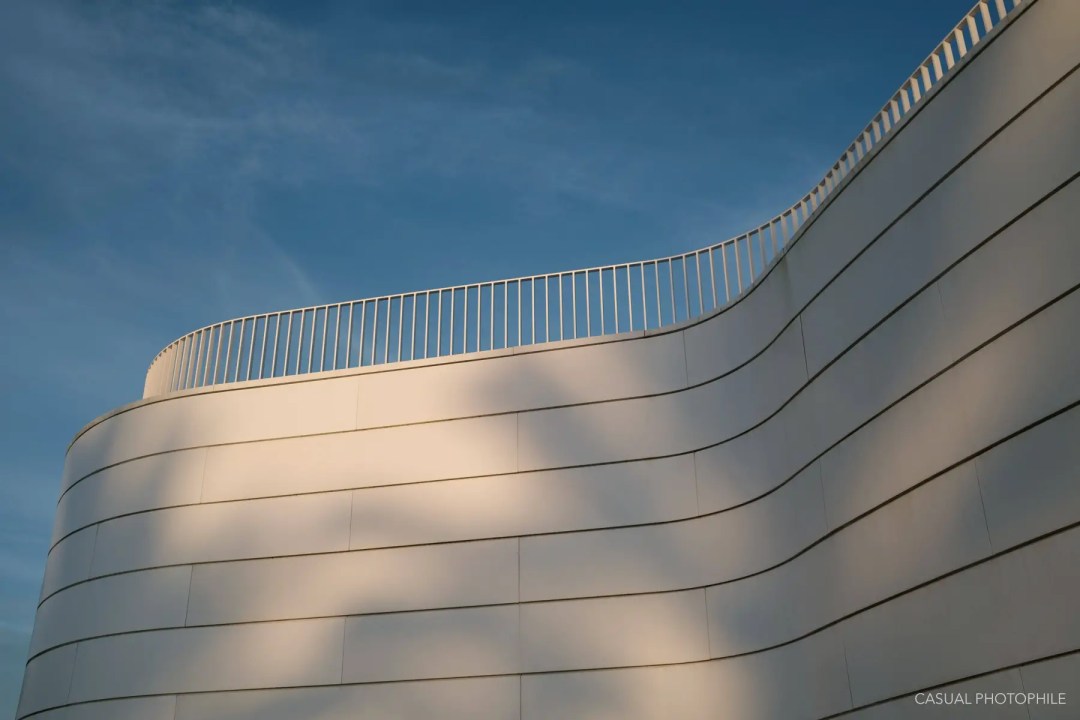
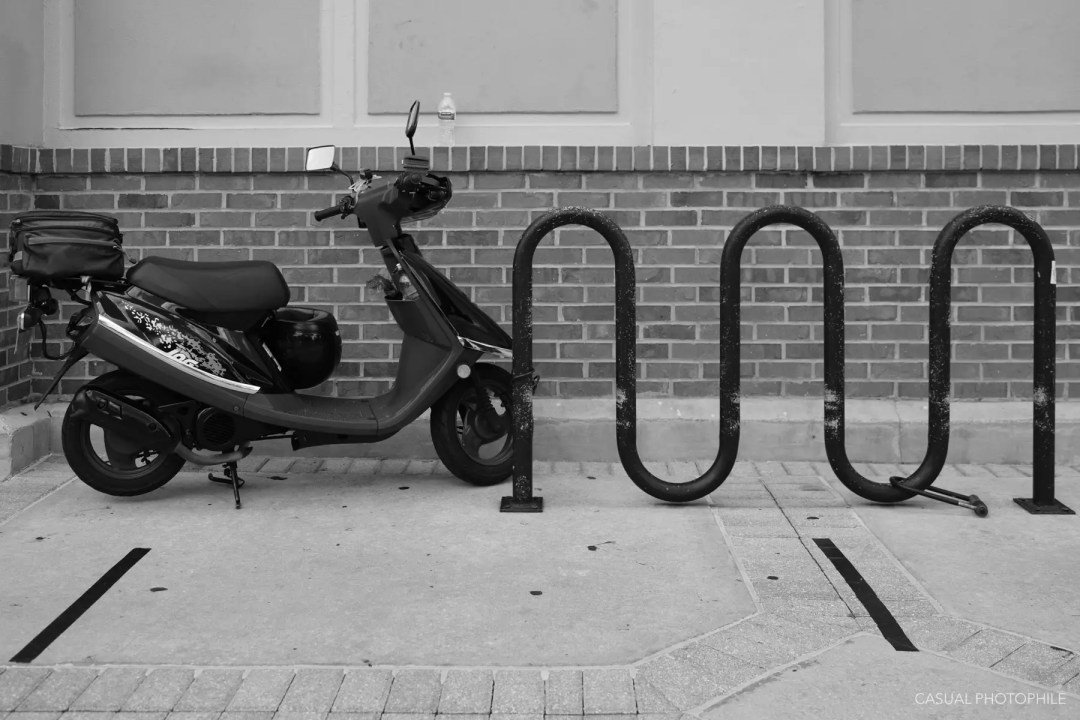
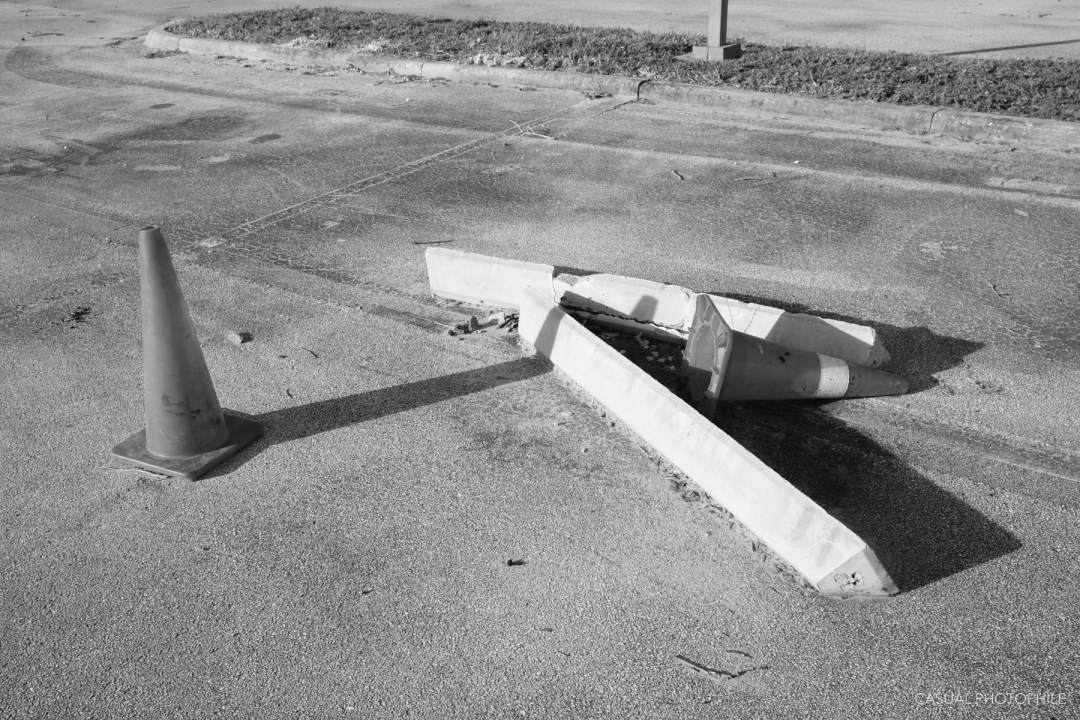
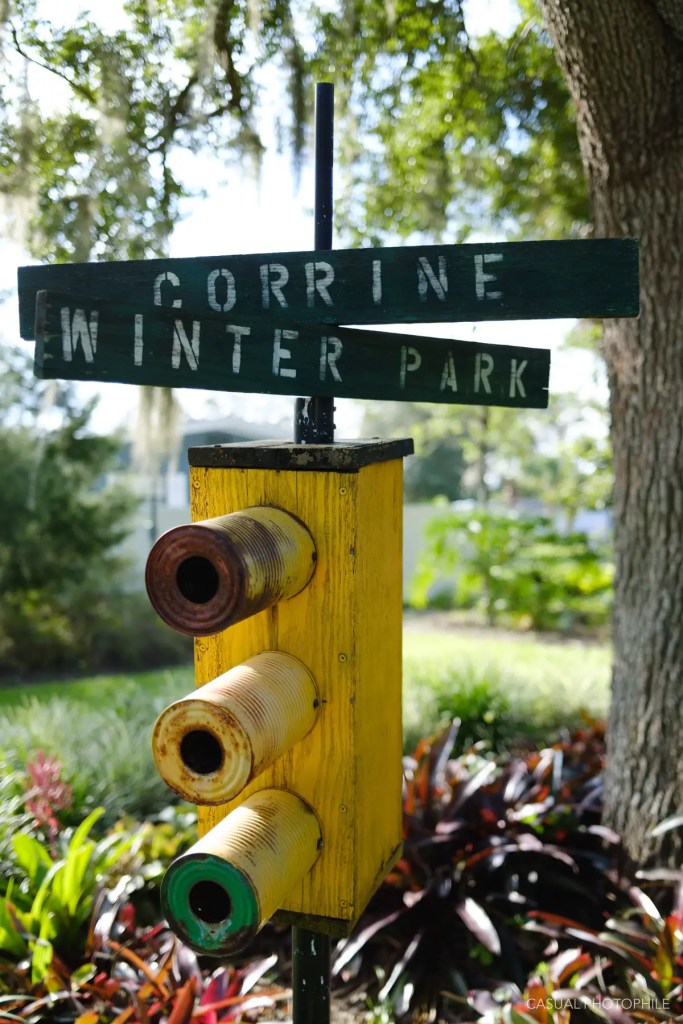
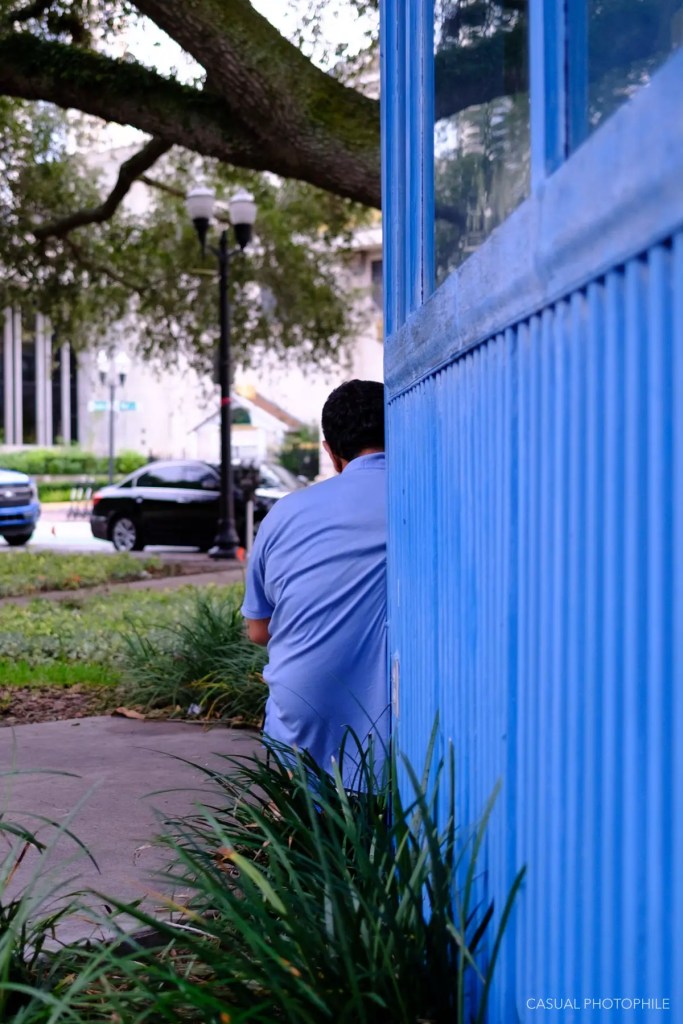
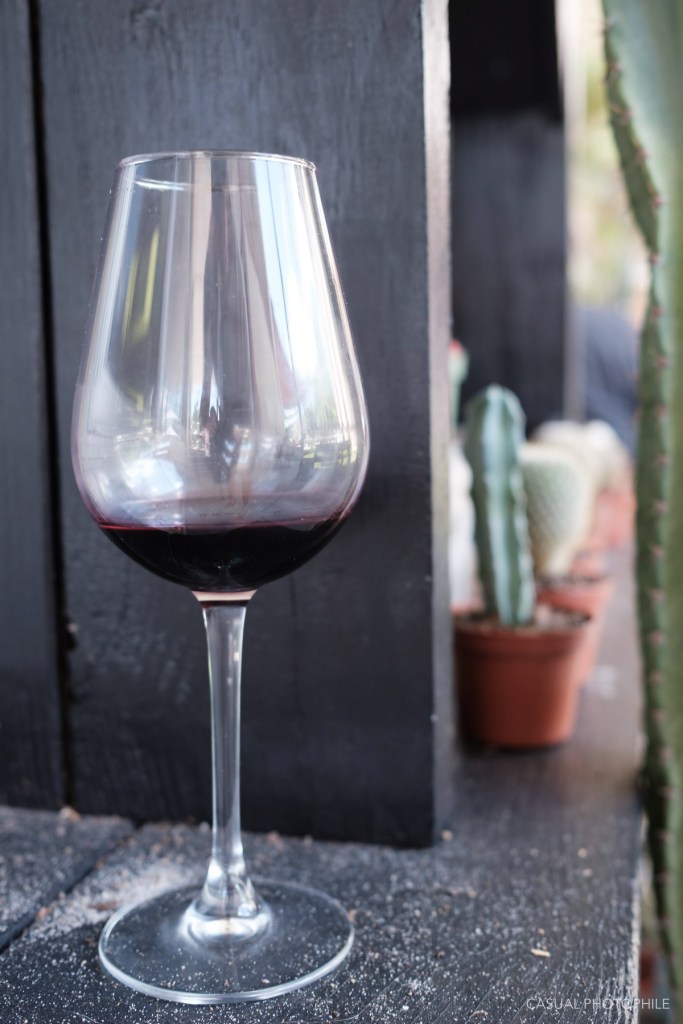
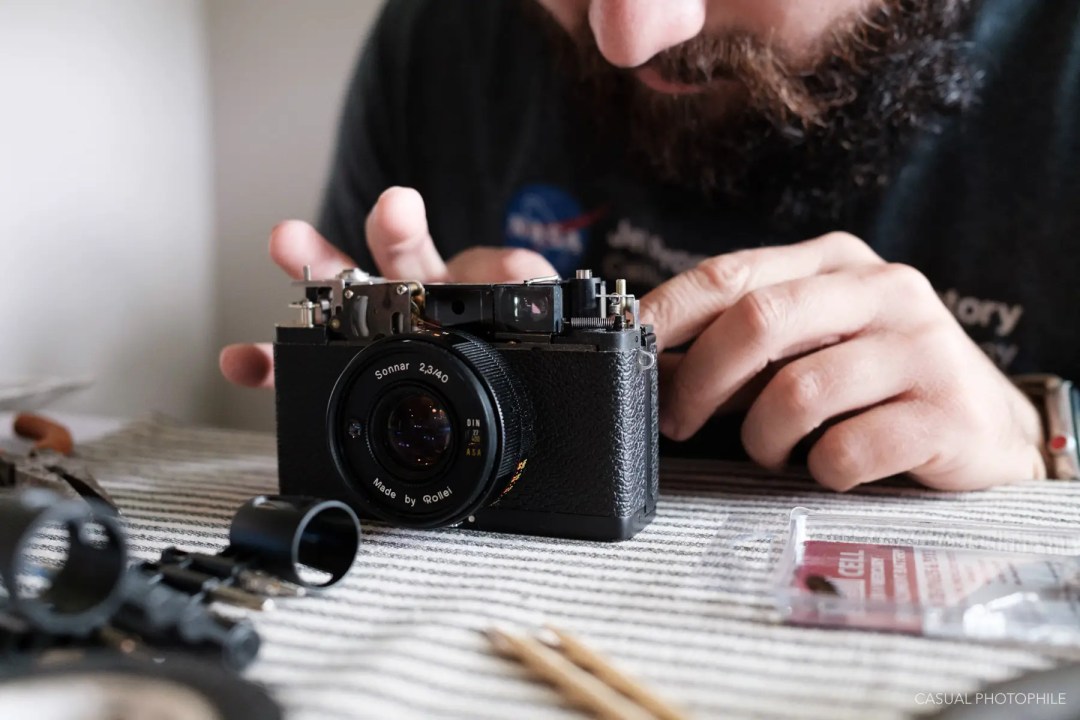


Thanks for the review, it made for interesting reading.
However, the X100 was not the first camera of this kind…. That was the Leica X1, I have owned both a Leica X1 and a second iteration Fuji X100s.
If you are after simplicity and superb quality from a pocket camera, the Leica beat the Fuji on all fronts, indeed it still does.
However, neither, in my view can be mistaken for film cameras.
I don’t know whether Fuji have improved things, but the version that I had, presented some awful issues. The battery ran down very suddenly and the battery meter would show that the battery was half full and then suddenly it was empty. There was an issue (for me) with the viewfinder flaring with depressing regularity. I was never able to set up any of the personalised programs satisfactorily, since there was a very strange procedure which stymied me every time, so every time, I had to consult the manual, it was completely unintuitive.
The Leica X1 though gave ME better pictures, even at 10MP, and the controls were really simple, with a very flat menu and physical knobs for the important in-use settings.
——————————————-
For a camera that can genuinely be mistaken for a film camera, my current Leica M-D (262) is the one. There are no menus, there is no chimp meter, and the only controls are in the perfect places.
The ISO settings are to be found on the back, where most digital cameras have a screen, and it takes the form of a large wheel with solid click stops between the various ISO numbers, the shutter speeds are set by a knob that is in the same place as all of the other Leica film and digital cameras (barring the latest CL, TL, SL) that have ever existed. The aperture controls are on the lens, along with focus. Since there are hundreds of lenses that are compatible and not all are made by Leica, positioning of those controls is not uniform, although in most cases it can be done with the camera to the eye.
Lenses that are compatible can be bought for anything between $20 and $20,000. Your lenses can be used on Leica M cameras, so the decision as to whether to shoot your favourite lens on real film or digital sensor, is moot.